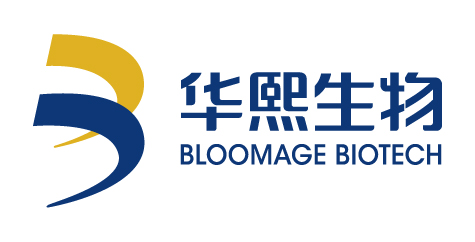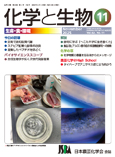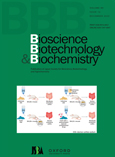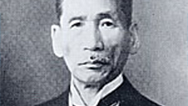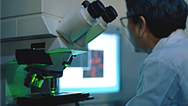[on December 10, 2017]
Visionary NOUGEIKAGAKU 100
Symposium on Microbe and Biomass Area: "Power of a microbe supporting sustainable society"
Date & venue; Tokushima University on December 10, 2017
1. Bacterial cell factory converting agricultural wastes into rare inositol isomer
Ken-ichi Yoshida, Graduate School of Science, Technology and Innovation, Kobe University
myo-Inositol (MI) is the most abundant inositol stereoisomer in nature. On the other hand, scyllo-inositol (SI) and D-chiro-inositol (DCI) are the other isomers rare in the nature but expected as therapeutic agents for Alzheimer's disease and diabetes, respectively. A bacterium Bacillus subtilis has the ability to metabolize inositol stereoisomers, including MI, SI, and DCI. Previously, we reported B. subtilis cell factories with modified inositol metabolism that can convert MI into SI in the culture medium. Phytic acid, MI hexakisphosphate, is the principal storage of phosphorus in many plant tissues, especially rich in agricultural wastes such as rice bran. Phytases are the enzymes that can trim inorganic phosphates from phytic acid to liberate MI. Therefore, we aimed at secreting heterogeneous phytases in B. subtilis to enable the possible direct conversion of phytic acid in rice bran into the rare inositol isomers.
2. Technical development of rare sugar production using bio-method
Goro Takata, International Institute of Rare Sugar Research and Education, Kagawa University
Rare sugars are monosaccharides and their derivatives not abundant in nature, which was born in Kagawa prefecture in Japan. All rare monosaccharides are possible to mass-produce in our institute and technical development of various derivative production is under studying now. In this research, a new bacterium capable of sugar dehydrogenation was isolated and its application for rare sugar production was investigated.
3. Engineering advanced functional materials from chiral-nylon biopolymers
Makoto Ashiuchi, Faculty of Agriculture, Kochi University
We are now facing a new age of intelligent materials development using fine, sustainable polymer chemicals. Our challenge led to succeed in developing feasible antimicrobial coatings with the antithetical nature of extreme durability and rapid (controllable) removability from an archaeal polyamide bearing a peculiar functionality that can bind cooperatively to various cationic compounds such as heavy metals and organic surfactants, called stereo-regular poly-γ-glutamate. Attempts were also successfully made to transform a nylon 6-like actinomycetous exopolymer (i.e., poly-ε-L-lysine) into novel organogel materials.
4. Microorganisms involved in the reduction of indigo on the indigo dying processes
Eiji Sakuradani, Faculty of Bioscience and Bioindustry, Tokushima University
Aizome is a traditional dyeing method in Tokushima prefecture in Japan, and it is done with indigo contained in the family Polygonaceae. For indigo dye preparation, reduction of indigo by microbial fermentation is essential. In this research, indigo-reducing microbes present in the dye solution were isolated and their reduction abilities were evaluated to elucidate the roles of microbes in the dye solution.
5. Development of biofilm control
Nobuhiko Nomura, Faculty of Life and Environmental Sciences, University of Tsukuba
Control of microorganisms has been required in many areas (water treatment, environment, food, cosmetics and pharmaceuticals). In such areas, microorganisms exist as multi-species biofilms. Biofilm control is based on engineering approaches, such as nutrients, pH, and oxygen supply, however these approaches are rapidly reaching their limit. Therefore, control technology and the theory of innovative multi-species biofilms is of vital importance. In biofilms, there are interactions such as cell-cell communication and heterogeneity. Further clarifying such mechanisms will lead to a greater understanding of bacterial communities and how they may be controlled in their unique environments.
6. Development of novel manufacturing with microorganisms for sake-making
Yoji Hata, Research Institute of Gekkeikan Sake Co. Ltd.
Sake, Japanese rice wine, is produced by two kinds of microorganisms, sake yeast, Saccharomyces cerevisiae and sake fungi, Aspergillus oryzae. They have been improved for more than a thousand years by past brewers in order to make better sake. Recently, it has been found that they are capable as a host for material production other than sake making. I'd like to introduce some kinds of applications of sake microorganisms to novel manufacturing of functional foods and hair-care cosmetics.
7. "Proline" science and technology in yeast: Metabolic regulations, physiological functions and biotechnological applications
Hiroshi Takagi, Graduate School of Biological Sciences, Nara Institute of Science and Technology
Proline is an important amino acid in terms of its biological functions and biotechnological applications. In response to osmotic stress, proline is accumulated in many bacterial and plant cells, but proline levels are not increased under various stress conditions in yeast cells. The metabolic regulation of proline has been well studied in many organisms; however, the in vivo functions of proline, particularly as a stress protectant, are poorly understood. In this lecture, I will show the recent findings on the metabolic regulations and physiological functions of proline in yeast. Also, the potential applications of yeast strains that accumulate proline will be introduced.































